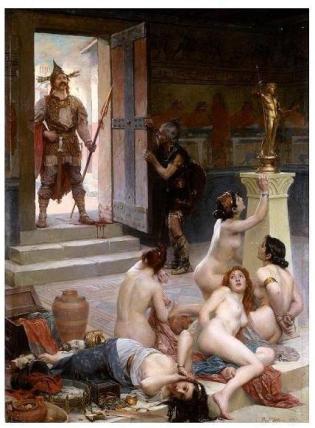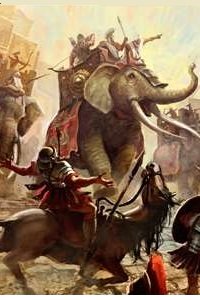The Early Roman Republic (509 BC -274 BC)
Updated on: 30 April 2023Reading time: 5 minutes
Tarquinius Superbus, the last king of Rome, was a brutal ruler who maintained power through violence and disregard for Roman traditions and the Senate. He even murdered his predecessor, Servius Tullius, with the help of his wife, who was Tullius' daughter. This shocking event is depicted in Jean Bardin's painting "Tullia drives over the corpse of her Father."
Tarquinius' son was also a terrible leader, as he raped Lucretia, the daughter of a Roman noble, leading to her suicide. In 509 BC, a group of Roman nobles revolted against Tarquinius Superbus, expelling him from power and starting the Roman Republic. This event was significant enough that the word rex (king in Latin) retained a negative connotation throughout the Roman Empire's existence.
Separation of powers in the early Roman Republic
Brutus and Collatinus, two of the noblemen who incited the revolt against Tarquinius, became the first consuls of Rome, starting the Republic. In this new system, the religious powers were separated between the Rex Sacrorum and the Pontifex Maximus. The praetor was given judicial powers, while the census was carried out by the censor. Power was distributed among various magistrates who were elected annually, with the two most important being the consuls who also had military command.

Paul Jamin Le Brenn et sa part |
The Senate, which had only been advisory during the Roman kingdom, gained more power during the Republic. Several assemblies were created, including the Comitia Centuriata, which elected important officials and decided on matters of war and peace. The Roman Republic's constitution set checks and balances and separated powers.
The Gaul invasion (circa 400 BC)
Around 400 BC, Rome was attacked by the Gauls, who had entered Italy, gone through Etruria, and reached Rome. At the Allia River (10 miles north of Rome), the Gauls defeated the Romans, entered the city, set fire to many buildings (including the royal palace, which housed all the archives that were lost forever), and looted and occupied the city for seven months. The Gaul Invasion of Rome in 390 BC was a significant event that shook the early Roman Republic to its core. According to ancient sources, the Gauls were led by a chieftain named Brennus, who invaded Italy with a massive army. However, the Romans eventually defeated the Gallic army. The invasion had a profound impact on Roman society, and it led to major political and military reforms. The Roman army was reorganized, and several new measures were put in place to strengthen the city's defences. The invasion also reinforced the importance of the Roman Senate, which was given greater powers and responsibilities in the wake of the attack.
Expansion of Roman power (400 - 200 BC)
After the Gaul Invasion, Rome began a period of rapid expansion, both militarily and territorially. During the period of Roman expansion from 400-200 BC, Rome emerged as a major power in the Mediterranean world. The conquest of Etruria, for example, brought Rome into contact with the powerful city-states of central Italy and helped establish Rome as a regional power. The conquest of Magna Graecia, which included the cities of Tarentum and Sybaris, gave Rome control over important seaports and enabled the city to expand its trade networks.
The expansion of Roman power during this period was fuelled by several factors, including economic incentives, the need for new territory to expand Rome's agricultural production, and a desire for power and prestige among Rome's ruling class. This expansion set the stage for Rome's eventual domination of the Mediterranean world and its emergence as a superpower in the ancient world.
SOURCES
- The Rise of Rome (Livy, Oxford University Press, 2009)
- The Rise of Rome: The Making of the World's Greatest Empire (Anthony Everitt, Random House, 2012)
- The World of Rome (Michael Grant, Plume, 1987)
- The Roman history (Cassius Dio, Vol. 1, Penguin Classics, 1987)
